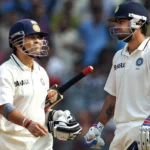Do you want to know how to calculate run rate in cricket?
Calculating the run rate in cricket can help a team understand how many runs they need to score in a certain number of overs (a set of six consecutive deliveries) in order to win a match. It can also help individual players understand their own performance and set targets for themselves.
In this article, we’ll show you how you can calculate run rate in cricket. Let’s check this out.
How to Calculate Run Rate in Cricket
Here’s a step-by-step guide on how to calculate run rate in cricket:
1. Total Number of Overs
Determine the total number of overs that have been played in the match. In cricket, an over consists of six consecutive deliveries by the same bowler.
2. Calculate the Total Number
Calculate the total number of runs scored by the team. This can be found by adding up the runs scored by each individual player, as well as any extras (such as byes or leg byes) that have been scored.
3. Divide the Total Number
Divide the total number of runs scored by the total number of overs played. This will give you the run rate per over.
4. Multiply the Run Rate
Multiply the run rate per over by the number of overs remaining in the match. This will give you the total number of runs that the team needs to score in order to win the match.
Examples
For example, let’s say that a team has scored 200 runs in 30 overs. Their run rate per over would be 200 / 30 = 6.67. If there are 20 overs remaining in the match, they would need to score a total of 6.67 x 20 = 133.4 runs in order to win.
It’s important to note that the run rate can change constantly throughout a match, as the number of runs scored & the number of overs played will both be continually updated. As such, it’s important for teams and players to continually monitor their run rate and make strategic decisions based on this information.
Conclusion: How to Calculate Run Rate in Cricket
In summary, calculating the run rate in cricket can be a greatest tool for understanding a team’s performance and setting targets for the remainder of the match.
It involves dividing the total number of runs scored by the total number of overs played, and then multiplying this figure by the number of overs remaining in the match to determine the total number of runs needed to win.
That’s all! You can also check out Who Hit the Longest Six in Cricket History? and How to Get a Cricket to Stop Chirping.

Sports Beats India is a website that covers all the latest sports news from India. We provide comprehensive coverage of all the major sports including cricket, football, hockey, tennis and more. We also have a dedicated team of writers who provide expert analysis and opinion on all the major sporting events taking place in India.






